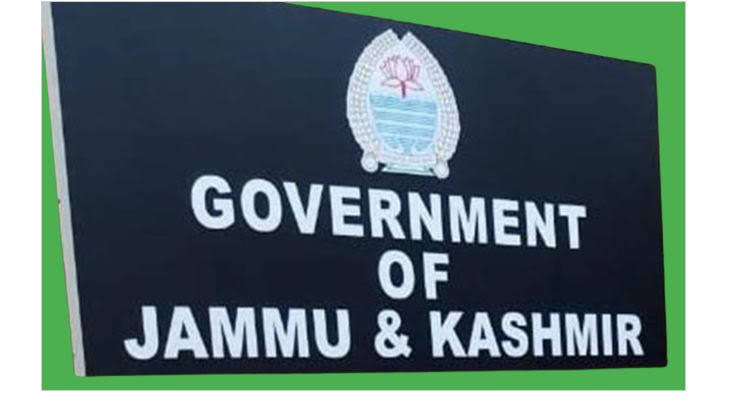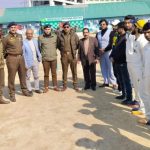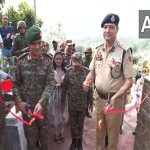The Government on Wednesday accorded sanction to the constitution of a Committee headed by Chief Secretary for “comprehensive review and improvement” of traffic management system in the Jammu and Srinagar cities.
The 12-member committee comprises of Administrative Secretaries of departments of Home, Housing and Urban Development (Member Secretary), Tourism, Transport, Public Works (R&B) besides Divisional Commissioner, Kashmir/Jammu, Inspector General of Police, Traffic (or his representative not below the rank of Senior Superintendent of Police), Commissioner, Jammu Municipal Corporation/Srinagar Municipal Corporation, Regional Director, National Highway Infrastructure Development Corporation Limited (NHIDCL), Regional Director, National Highways Authority of India (NHAI)/National Highways and such other member as may be co-opted by the Committee, according to a government order.
The terms and references for the committee include traffic planning and data analysis in order to devise detailed traffic management plans for Srinagar and Jammu cities, identifying alternate routes based on scientific studies and data analysis.
The panel has been also asked with to ensure that traffic plans are adaptable and incorporate feedback from local authorities, citizens, and stakeholders.
It has been also called upon to develop and operationalize an efficient traffic management system, including the installation, management, and maintenance of traffic signals at key junctions, rotaries, and T-points.
The committee is also tasked with to establish an effective mechanism for addressing traffic violations through the integration of the Intelligent Traffic Management System (ITMS) and Integrated Command and Control Center (ICCC), enabling automatic detection and penalty issuance for violations.
Importantly also, the panel has been tasked with to suggest measures to enforce strict lane driving rules, particularly on congested routes, with penalties for improper overtaking; monitor and manage high-traffic routes using technology-driven solutions for real-time enforcement; mobilize the traffic department to enforce traffic rules rigorously and intensify actions against violators, particularly on roads prone to accidents and congestion; integrate data on repeated traffic violators with the transport department’s database, enabling real-time actions and stricter penalties for habitual offenders and ensure 100% shifting to e-challans and recovery of the fine.
Regarding de-congestion Measures, the committee has been tasked with to implement de-congestion strategies for areas with high footfall and vehicular traffic, especially in tourist and pilgrimage zones; identify and propose actions to regulate commercial activities that impact traffic flow, ensuring a balanced and efficient transportation environment and prioritize traffic management for areas of high tourist or religious significance, optimizing both vehicle and pedestrian movement to avoid overcrowding and delays.
As regards increasing Road Capacity and Infrastructure Expansion, the panel has been tasked with to identify locations where road infrastructure needs expansion or upgrading to accommodate growing traffic volumes, including increasing the carrying capacity of critical roads; focus on the speedy completion of ongoing developmental projects to alleviate traffic congestion.
Regarding encroachment Control and Relocation of Street Vendors, the panel has been asked to address encroachment issues, particularly by street hawkers, and recommend strategies for their relocation and rehabilitation in a manner that does not disrupt traffic flow.
Besides, it has been asked to identify traffic-heavy routes where one-way traffic movement or no-traffic zones can be implemented, accompanied by clear and visible signage to guide motorists.
Also, the committee as per the order with Global News Service, have been asked to identify routes to introduce e-bus services with increased frequency to reduce personal vehicle usage during peak hours, thereby reducing traffic congestion.
Regarding steps on safety and accident reduction, the committee’s reference includes among others to implement measures to create no-honking zones to minimize noise pollution and improve traffic flow; propose targeted strategies to reduce accidents and fatalities on roads through better road design, awareness campaigns, and stricter enforcement of safety norms and ensure all equipment for road safety like Alcohol Meters, Speed Checking Devices etc. are deployed to check traffic violations and are made functional as per the laid down standards.
It has been also tasked with to deploy equipment and personnel as per MHA/BPRD norms; frame a calendar for the Inspection/Audit of school buses and vehicles so as to avert any untoward incidents in the future.
On Integrated Urban Planning Approach, the committee has been tasked with to develop a holistic approach to address traffic management by integrating and coordinating all the above aspects under the umbrella of Urban Planning and Development; ensure synergy among key stakeholders such as the Traffic Police Department, PWD (R&B), NHAI, and local authorities for effective traffic resolution through minimal engineering interventions.
The panel has been also asked to identify land or areas suitable for developing adequate parking spaces to address the increasing vehicular population, encourage the creation of more parking areas, including lay-bys and designated zones for e-vehicles, to ensure better management of city traffic.
The committee has also been tasked with management of Shikara and Water Transport and on this count has been asked to consolidate the current number of Shikara ghats, reducing them from the existing 24 to 2 or 3, and ensure better traffic management around these areas.
It has been also asked to develop foot over bridges to connect parking spaces with Shikara ghats, facilitating pedestrian movement and reducing road congestion.
The terms of reference for the panel also include Footpath and Roadway Improvements with focus on the removal of encroachments on footpaths, ensuring they are free from obstruction and accessible for pedestrians.
It has been also tasked with to plan for the widening of Boulevard Road and other key roads to enhance traffic flow and pedestrian safety.
The committee has been called upon to expedite the construction and development of projects under the Smart City Mission that directly affect traffic flow, ensuring that these projects are completed on time and have minimal disruption to daily transportation.
Regarding capacity Building and Awareness Program the committee is required to follow and implement the recommendations of Supreme Court Committee on Road Safety (SCCORS); utilize the Road Safety Funds for the training of commercial drivers and professional in road safety and creating an ecosystem for the prevention of accidents and management and include capacity building, training, adherence to SOPs and guidelines, awareness by all modes of media regarding traffic rules, good practices and an IT enabled system.
Besides it has been tasked with to ensure inclusion of Road Safety measures in the school curriculum by tailoring them as per the age of the pupils.
Its task also includes coordination for seamless traffic management by ensuring adherence to Black Spots Protocol for identification, Rectification and Monitoring as per the recommendations of SCCoRS.
To be serviced by Housing and Urban Development Department, the committee has also been asked to ensure continuous coordination and integration of efforts among all concerned stakeholders for effective and sustainable traffic management solutions in Srinagar and Jammu cities. (GNS)










